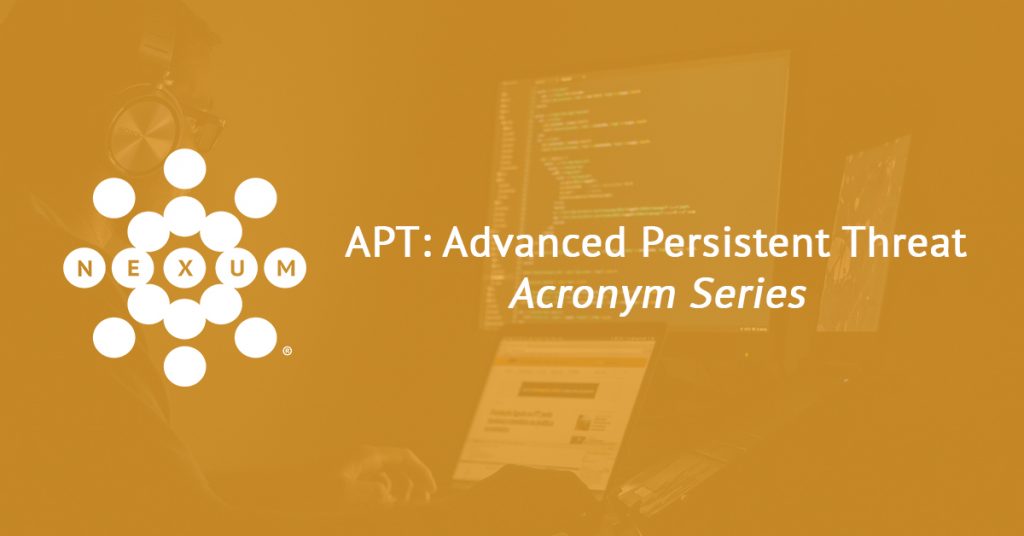
APT: Advanced Persistent Threat
Acronym Series

Written by: Allyn Crowe, Principal Security Engineer
Connect with Allyn on LinkedIn
In our Acronym Series, Nexum’s expert engineers define the industry’s most popular topics.
Acronym: APT – Advanced Persistent Threat
Definition: An APT is a threat actor with both significant resources and skill that engages in a prolonged attack against a target.
Explanation:
APTs have a variety of similar definitions depending on which resource you look at. But the key elements are skills and resources (the “Advanced” part), dedication to the attack (the “Persistent” part), and the attack (the “Threat” part). In the realm of information security, the term originated from the United States Air Force in 2006. It was developed to be an unclassified term for referring to nation-state sponsored attackers.
Within enterprise environments, the start of the APT was in January 2010, with the disclosure from Google that a sophisticated attack had targeted the company. These days the term has expanded to refer to any group that is resourced, skilled, and dedicated to attacking a target. There are multiple APT lists from different information security firms and vendors.
Ultimately, the key to an APT is that it’s not just some script kiddie who found an open port on a website. These threat actors are skilled, dedicated, and in it for the long term. Whether the goal of the APT is for corporate espionage, hacktivism, or terrorism, companies must be vigilant against APTs.
Check Out More Resources

Juniper EX4000
Nexum’s, Allyn Crowe, breaks down what sets the latest EX4000 series switch apart—powerful PoE, multigig support for next-gen Wi-Fi, and faster performance. With quick boot times and seamless upgrades, it’s a smart choice for future-proofing networks.

Juniper Announces Wi-Fi 7 Access Points
Nexum’s engineering team highlights Juniper’s new Wi-Fi 7 AP47 as a game-changer, offering faster speeds, quad radios, and enhanced IoT capabilities. With dual 10Gbps interfaces and AI-driven Wi-Fi 7 support, these access points are designed for cutting-edge network performance.

AI-Native Now
Join Juniper Networks on June 5th for a LinkedIn Live exclusive discussion on “Leveraging AIOps for Maximum Impact.”

